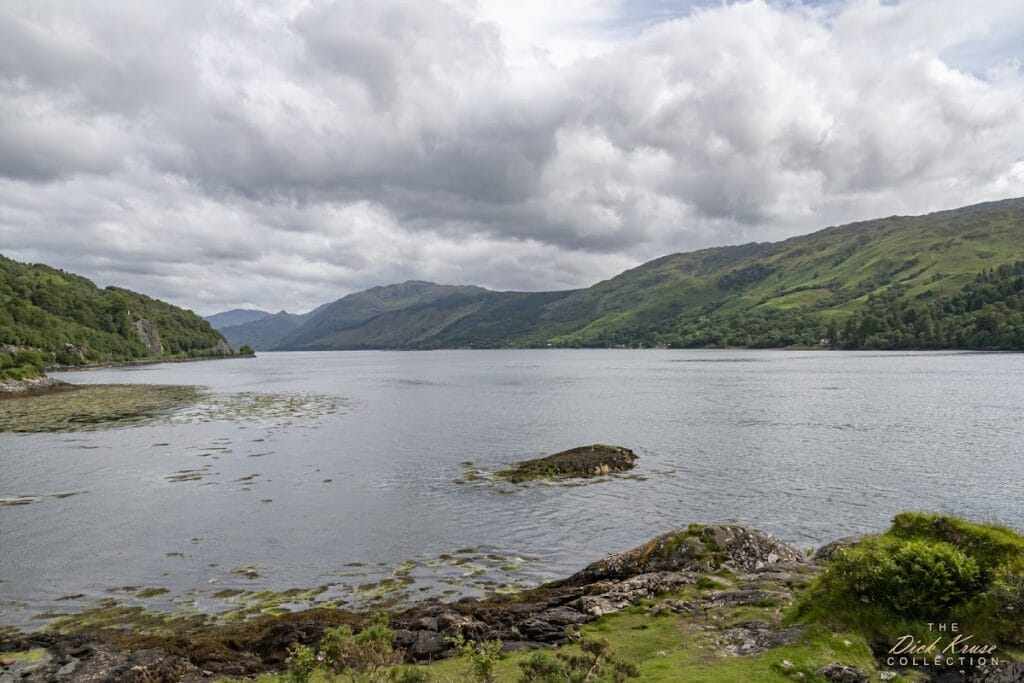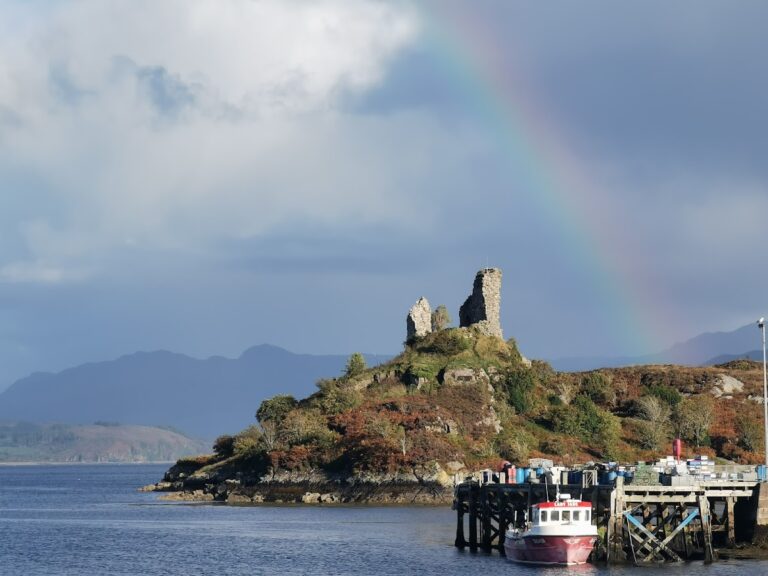Eilean Donan Castle: A Historic Scottish Fortress in Dornie
Visitor Information
Google Rating: 4.6
Popularity: Very High
Google Maps: View on Google Maps
Official Website: www.eileandonancastle.com
Country: United Kingdom
Civilization: Unclassified
Remains: Military
History
Eilean Donan Castle is situated on a small island in the municipality of Dornie, Scotland. The original site takes its name from Saint Donnán of Eigg, a 7th-century Celtic Christian martyr who is believed to have established a church or monastic presence on the island, marking the location’s early religious significance.
The first known fortified structure on the island dates back to around 1220, when King Alexander II of Scotland ordered the construction of a castle atop the remains of an earlier Pictish fortification. This initial building served as a defensive stronghold against Viking raids. Over time, the castle became the principal seat of the Clan Mackenzie of Kintail, who occupied it from at least the mid-13th century.
During the early 14th century, the castle played a role in the Scottish Wars of Independence. The famous Scottish king Robert the Bruce is said to have sought refuge at Eilean Donan throughout the winter of 1306–1307 while evading English forces. Throughout the following centuries, the fortress was involved in various local clan disputes, often contested by neighboring families such as the Macraes, Maclennans, MacDonalds, and the Earls of Ross. A notable event occurred in 1539 when Donald Gorm MacDonald of Sleat launched an attack, which was repelled despite the defenders being few in number.
The castle’s military significance continued into the 18th century during the Jacobite risings. In 1719, it was occupied by Spanish troops supporting the Jacobite cause. That May, the Royal Navy bombarded the fortress, resulting in the destruction of the castle when a large store of gunpowder exploded. Afterward, the castle remained in ruins for nearly two hundred years.
In 1912, Lt. Col. John MacRae-Gilstrap purchased the site and began a comprehensive restoration project. Completed by 1932, the reconstruction followed the original medieval layout while incorporating some updated architectural elements. This restoration also included the building of a stone arch bridge linking the island to the mainland and the erection of a war memorial honoring Clan MacRae soldiers who died during World War I.
Remains
Eilean Donan Castle occupies an island rising above the tides at the meeting point of three sea lochs, with its defensive structures originally arranged in a roughly circular ring wall enclosing about 3,000 square meters. The earliest stone keep at the center measured approximately 16.5 by 12.4 meters, featuring robust walls about three meters thick. Archaeological evidence reveals the keep’s ground floor was vault-roofed and divided into two rooms, served by a northern staircase that provided access to upper levels. Excavations carried out in 2008 and 2009 identified signs of metalworking activity within the northern portion of the castle, underscoring its role beyond defense.
By the late 14th or early 15th century, the outer defensive perimeter was scaled down to a smaller enclosure roughly 25 meters square, featuring an approach from the east. The 16th century saw additions of two new buildings: a modest house with a spiral staircase positioned in the southeast corner, believed to have served as the constable’s residence, and an L-shaped structure occupying the southwest corner, partly inside and partly outside the enclosing wall.
A distinctive feature constructed in the late 1500s was an artillery bastion facing east. This irregular hexagonal hornwork, measuring up to 11.5 meters, was connected to the main castle by a triangular courtyard walled in for added protection. Inside the bastion lay a deep well, more than 10 meters in depth and about 5 meters wide, covered with a movable bridge that could be drawn up for defense.
By the early 18th century, the castle had lost much of its roof and was generally in ruins, with only a small building at the southeast corner still intact before its final demolition in 1719 following the naval bombardment.
The 20th-century restoration respected the medieval layout but adapted the scale and form of several parts. The new entrance on the south side includes a gate equipped with a portcullis—a heavy, vertically sliding door—above which is carved the coat of arms of John MacRae-Gilstrap and a Gaelic inscription declaring, “So long as there is a MacRae inside, there will be no Fraser outside.” The rebuilt southeast complex incorporates a round stair tower and a three-story house in the southwest corner, while the northern segment of the original L-shaped building was replaced by an open platform overlooking Loch Duich. Inside the reconstructed castle, the ground floor includes a vaulted hall used as a lodging space. The first floor features a dining room with a 15th-century style oak ceiling and a heraldic fireplace reflecting historical design.
A stone arched bridge, constructed during the restoration, now provides permanent access to the island, replacing the original ford or causeway that once connected the site to the mainland.
Adjacent to the castle stands a war memorial dedicated to members of Clan MacRae who fell during World War I. This monument is decorated with lines from the poem “In Flanders Fields” and is flanked by two grey field cannons from the conflict, commemorating the clan’s military sacrifices.










